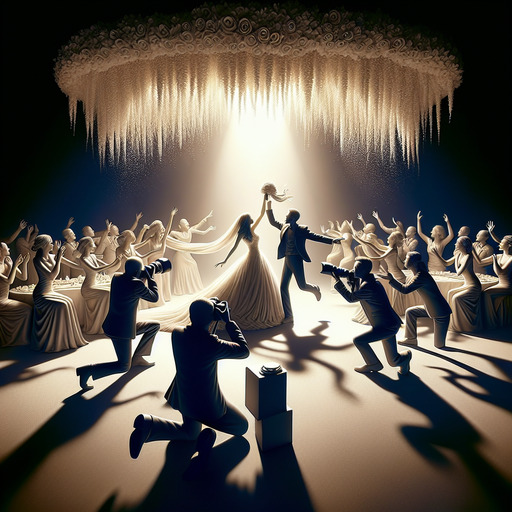
-
Table of Contents
Capture your dream wedding moments with perfect lighting! Discover essential Wedding Photography Lighting Tips for Perfect Shots. Learn more here.
Introduction
Wedding photography is an art that requires a keen eye for detail, impeccable timing, and a deep understanding of lighting techniques to capture the magic of the moment. Lighting plays a crucial role in setting the mood, highlighting emotions, and ensuring that every shot is picture-perfect. Whether you’re shooting indoors or outdoors, mastering the nuances of natural and artificial light can make a significant difference in the quality of your photographs. This guide delves into essential wedding photography lighting tips, offering insights and practical advice to help you achieve stunning, memorable images that the couple will cherish for a lifetime.
Wedding Photography Lighting Tips for Perfect Shots
Capturing the perfect wedding photograph requires a keen understanding of lighting, as it plays a crucial role in setting the mood, highlighting details, and ensuring that every moment is beautifully preserved. To achieve stunning wedding photos, photographers must master various lighting techniques and adapt to different environments. One of the first considerations is natural light, which can be both a blessing and a challenge. The golden hour, occurring shortly after sunrise and before sunset, offers soft, warm light that is ideal for romantic and flattering portraits. However, midday sun can create harsh shadows and unflattering highlights, so it is essential to seek shaded areas or use diffusers to soften the light.
Transitioning from natural to artificial light, it is important to understand the use of flash and continuous lighting. Flash can be a powerful tool to fill in shadows and add a sparkle to the eyes, but it must be used judiciously to avoid overexposure and unnatural effects. Off-camera flash, in particular, allows for more creative control, enabling photographers to shape the light and create depth. Continuous lighting, on the other hand, provides a constant light source that can be adjusted in real-time, making it easier to see the effects immediately. This type of lighting is especially useful for capturing candid moments and ensuring consistent exposure.
In addition to the type of light, the direction and quality of light are equally important. Front lighting, where the light source is positioned in front of the subject, can create even and well-lit images but may lack depth. Side lighting, with the light coming from the side, adds dimension and texture, highlighting the contours of the subject. Backlighting, where the light source is behind the subject, can produce dramatic silhouettes and a beautiful halo effect, particularly during sunset. To achieve a balanced exposure in backlit situations, it is often necessary to use a reflector or fill flash to illuminate the subject’s face.
Moreover, understanding the color temperature of light is essential for maintaining accurate skin tones and overall color balance. Natural light varies throughout the day, with early morning and late afternoon light being warmer, while midday light is cooler. Artificial lights, such as tungsten and fluorescent, also have distinct color temperatures that can affect the mood of the photograph. Using a custom white balance setting on the camera or adjusting the color temperature in post-processing can help achieve the desired look.
Another critical aspect of wedding photography lighting is the venue. Indoor venues often present challenges with mixed lighting sources, such as chandeliers, candles, and ambient light. In such cases, it is beneficial to scout the location beforehand and plan the lighting setup accordingly. Using gels on flashes can help match the color temperature of the ambient light, creating a cohesive and natural look. Additionally, bouncing flash off walls or ceilings can diffuse the light and reduce harsh shadows.
Finally, practice and experimentation are key to mastering wedding photography lighting. Each wedding is unique, and being adaptable and creative with lighting techniques will ensure that every shot is perfect. By understanding the nuances of natural and artificial light, mastering the direction and quality of light, and considering the color temperature and venue, photographers can capture the magic of a wedding day in all its glory.
Q&A
1. **Question:** What are some essential lighting tips for capturing perfect wedding photos?
**Answer:**
– Use natural light whenever possible, especially during the golden hour (the hour after sunrise and before sunset).
– Employ off-camera flash to create depth and avoid flat images.
– Utilize reflectors to bounce light and fill in shadows on the subjects’ faces.
– Adjust the white balance to match the lighting conditions and ensure accurate color representation.
– Experiment with backlighting to create a romantic and ethereal effect.
– Be mindful of the direction and quality of light, positioning subjects to take advantage of the best lighting angles.
– Use continuous lighting for consistent illumination, especially in low-light situations like receptions.
– Scout the venue beforehand to identify the best lighting spots and plan your shots accordingly.